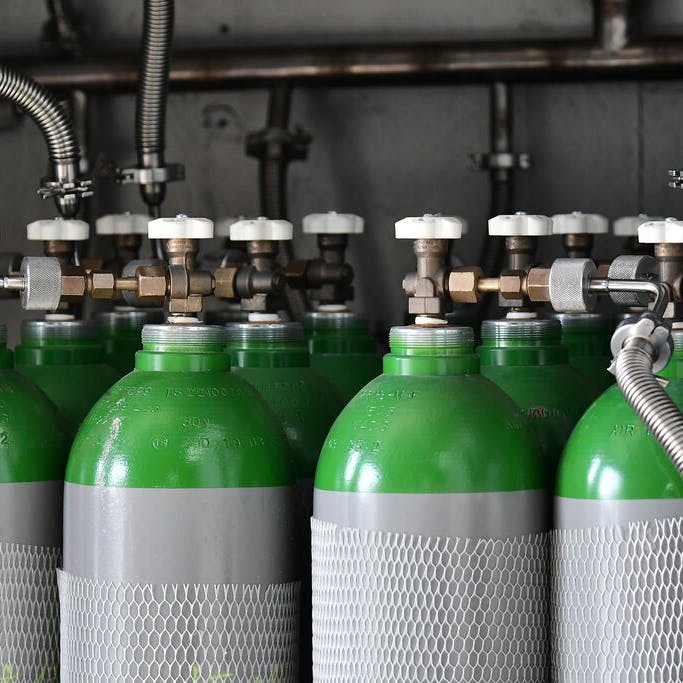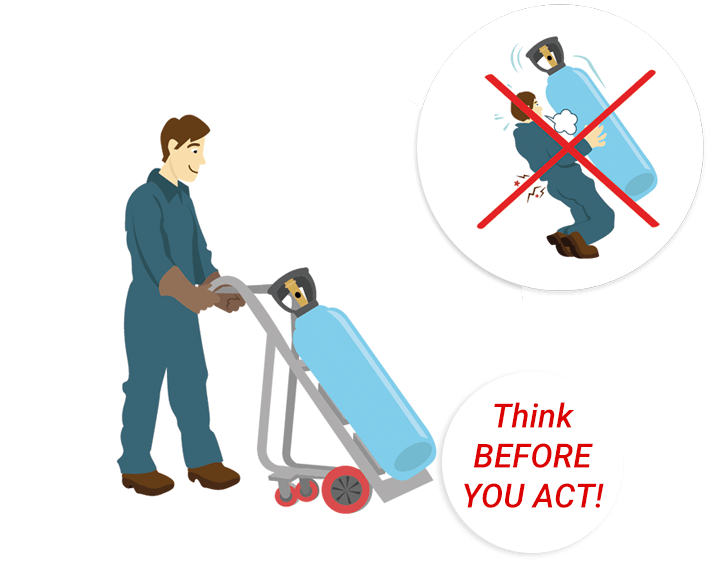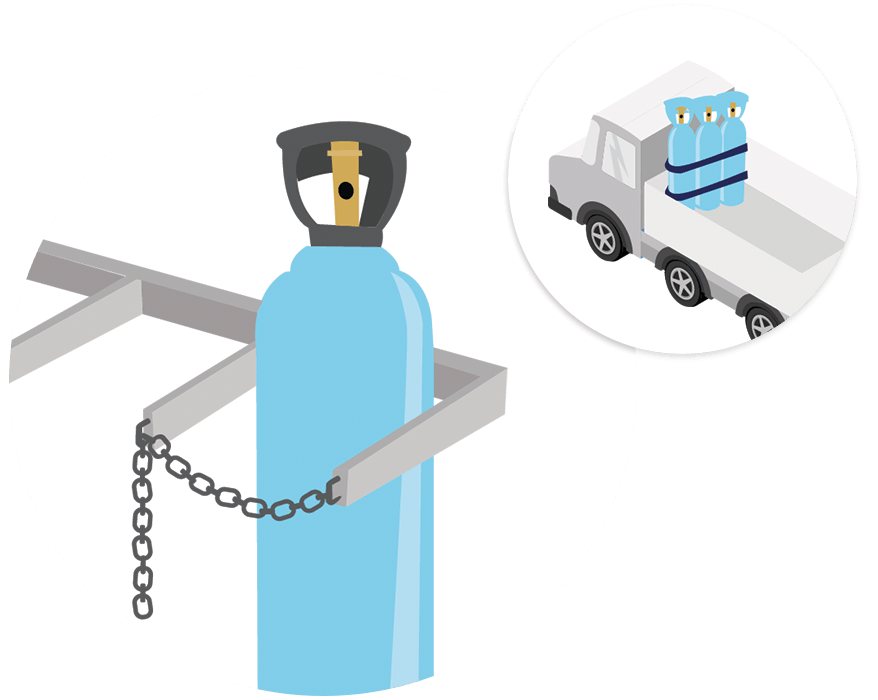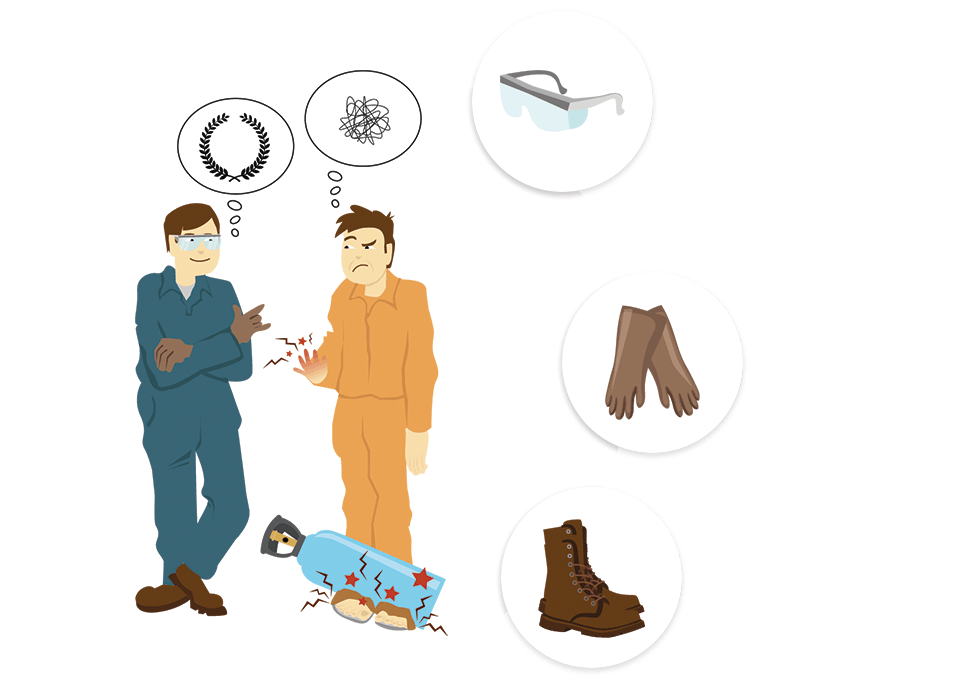7. User Information
7.3 Handling Cylinders
Ensure you read the product Safety Data Sheet (SDS) to familiarise yourself with the product before use.
The highest risk of accidents or injuries involving cylinders happen when moving or handling cylinders. Larger cylinder sizes (G or F size) can be heavy, and often difficult to handle. Special care and equipment should be considered when handling cylinders to avoid falls, trips and injury. Larger full G size cylinders, combined with certain gas types can weight in excess of 80kg.

Safety Guidelines
Your Safety is our priority.
CYLINDER HANDELING
 Use mechanical aids in preference to direct manual handling of cylinders (ramps, trolleys, forklifts, scissor lifts).
Use mechanical aids in preference to direct manual handling of cylinders (ramps, trolleys, forklifts, scissor lifts). Never attempt to catch or restrain a falling cylinder.
Never attempt to catch or restrain a falling cylinder. Never drop a cylinder as a method of moving it.
Never drop a cylinder as a method of moving it.

ENSURE CYLINDER IS SECURE
 Secure cylinders in an upright position in a well ventilated area.
Secure cylinders in an upright position in a well ventilated area. Ensure cylinders are positively secured to mechanical lifting/ handling devices prior to movement.
Ensure cylinders are positively secured to mechanical lifting/ handling devices prior to movement. Ensure that full and empty cylinders are kept separate.
Ensure that full and empty cylinders are kept separate. Always store cylinders away from emergency exits and walkways.
Always store cylinders away from emergency exits and walkways. Never store cylinders with flammable materials.
Never store cylinders with flammable materials.

WEAR PERSONAL PROTECTION
 Wear appropriate personal protective equipment (PPE) when handling cylinders - refer to SDS.
Wear appropriate personal protective equipment (PPE) when handling cylinders - refer to SDS. Never use force in opening or closing a cylinder valve.
Never use force in opening or closing a cylinder valve.

Precautions for safe handling of cylinders:
- Only experienced and properly instructed persons should handle cylinders.
- Handle cylinders with care and avoid dropping or hitting them against other objects
- Use the right PPE, including safety glasses, gloves and protective footwear.
- Protect cylinders from physical damage; do not drag, roll, slide or drop
- Do not lubricate cylinder valves with oil
